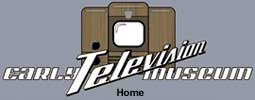Early Electronic Television Baird/EMI CompetitionIn 1936 the British goverment decided to hold a competition between a system proposed by Marconi-EMI and Baird. Alexandra Palace was chosen as the site mainly because of its location, high above London and because it could be equipped quickly and at low cost. The two competing systems of television were to be tested for a period of six months in two different studios. In studio A was the Marconi-EMI system, all-electronic on 405 lines. It had the advantage of being flexible: three cameras could be accommodated, and most importantly, the cameras could be moved on wheeled dollies to follow the action and to provide close-up shots. Studio B housed the Baird system on 240-lines (devised by John Logie Baird), which was a mainly mechanical system, much more limited in range and capacity. For some scenes, a flying spot scanner was used. Live announcements were made from a cramped "spotlight studio" which scanned the head and shoulders of the announcer with an intense beam of light, which was physically uncomfortable for the presenter. Farnsworth provided his cameras for Baird, but their low light sensitivity was a limitation, so Baird made use of the "Intermediate Film Technique" for other scenes. Under this system, a motion picture camera filmed the scene, the film passed into a processing tank of cyanide where it was developed, providing a TV picture only 58 seconds later. The official opening ceremony was on November 2, 1936. After the toss of a coin, the pilot program was transmitted first on the Baird system and then after a brief pause, the entire program was done again live on the Marconi-EMI system. The Marconi-EMI system proved to be vastly superior to Baird, and within three months the decision to go with the Marconi-EMI system was made and the Baird studio at Alexandra palace was closed down. |
